 2013 Hyundai Genesis Coupe 2.0T, Scion FR-S, Subaru BRZ
2013 Hyundai Genesis Coupe 2.0T, Scion FR-S, Subaru BRZ
Choosing a Scion FR-S over the Subaru BRZ or vice versa is like picking black or white at the start of any new game of chess. Everyone knows you should choose white in order to go first, but whoever gets black has the benefit of seeing the first move.
The Combatants
The 2013 Scion FR-S and Subaru BRZ are both powered by the same horizontally-opposed 2.0L four-cylinder Subaru Boxer engine that makes 200 hp and 151 lb-ft of torque. Although the engine is clearly tagged as both Toyota and Subaru, the speedometer and tachometer aren't as quick to pledge an allegiance to either automaker. Were it not for other subtle differences in exterior garnish, colour choices, multimedia options, interior materials and suspension tuning, you'd be hard pressed to tell them apart without any badges or at night.
Badged the Toyota GT-86 almost everywhere in the world but North America, these two worthy successors to the highly-popular and underrated AE86 Corollas of the mid-to-late 1980s are bringing back the affordable rear-wheel-drive sports car to reinvigorate brand loyalists whilst appealing to new and younger buyers for both companies.
The offspring of a marriage-of-convenience between the two Japanese automakers, the two coupes practically mirror one another from the wheels right on down to their key fobs. The parts-sharing shenanigans are quite obvious inside and out, but easy enough to forgive when you consider Subaru and Toyota have set egos aside for the benefit of enthusiasts.
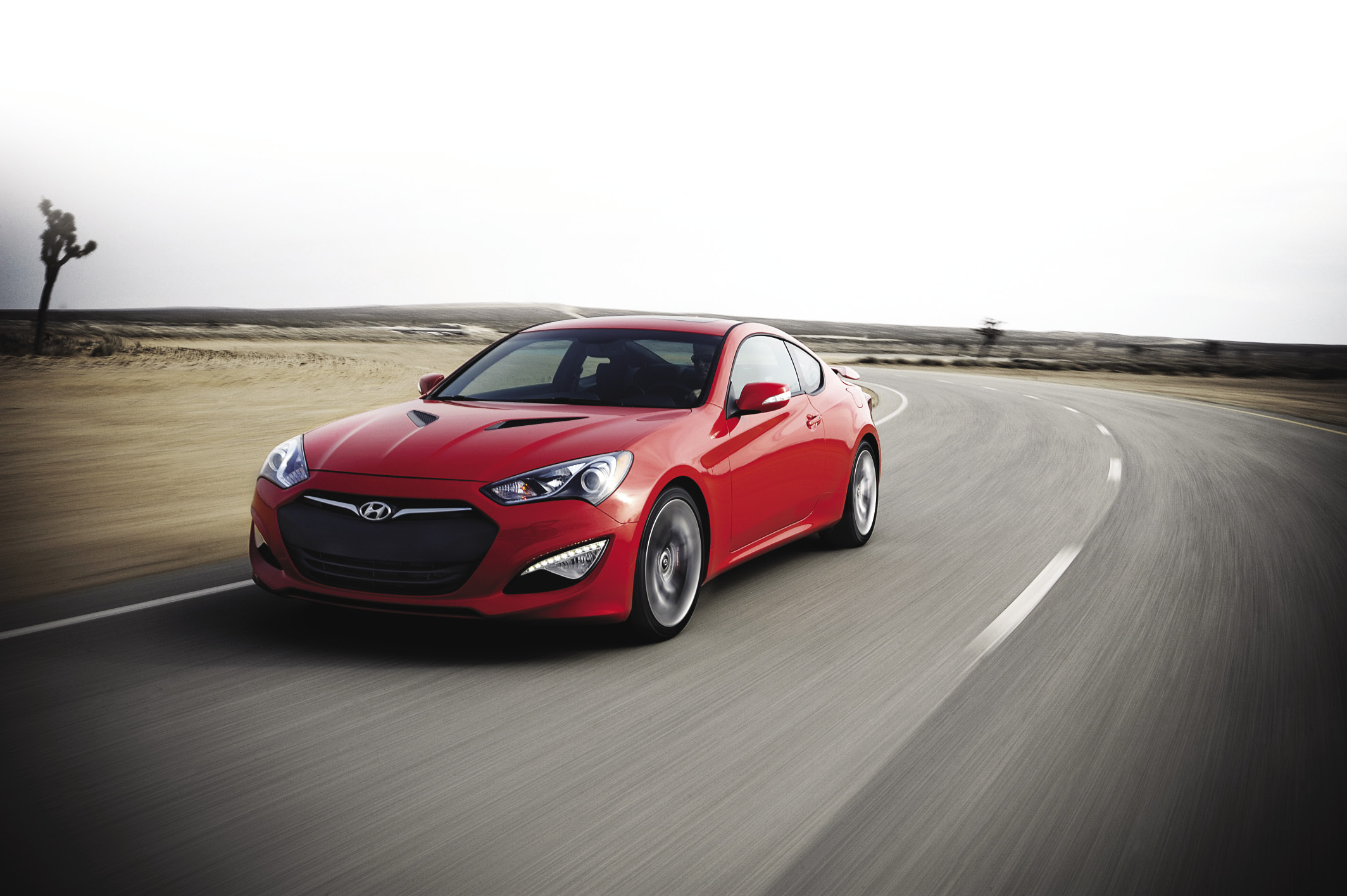
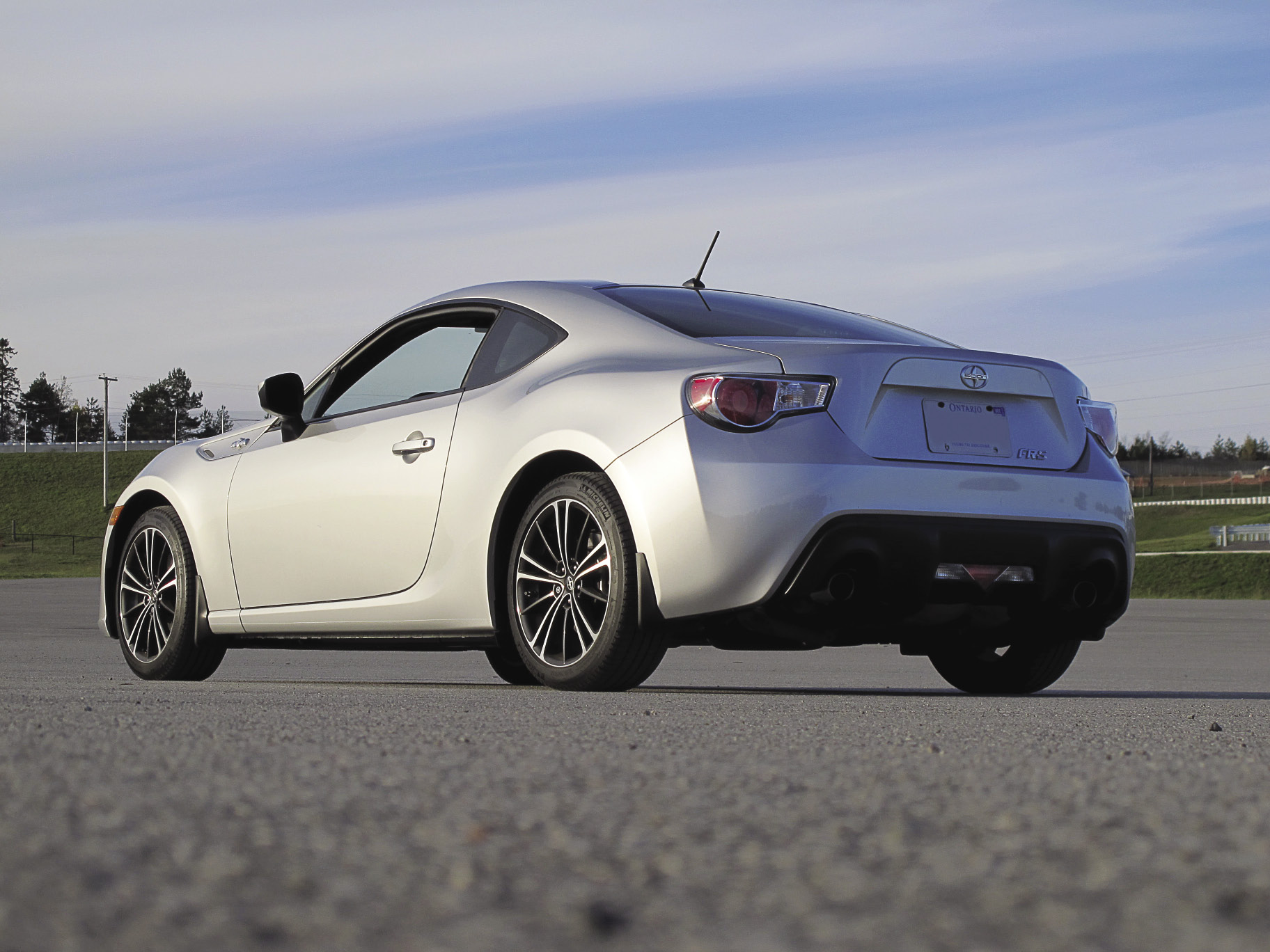 |
 |
Tale of the Tape
The FR-S stickers for $25,990 while the BRZ starts at $27,295. The same six-speed manual transmission is standard on both cars. An automatic is available as a standalone option that costs $1,180 extra on the Scion and $1,200 more on the Sube. Part of the reason for Subaru's higher MSRP is the Scion's standard multimedia head unit does not offer navigation while the BRZ one does. Both are from Pioneer, though the Subaru piece is much nicer to look at and use.
Road and wind noise are quite prevalent inside both cockpits and the centre console on both base models is more plasticky than the shinier optional Sport Tech package the Subaru can be equipped with. Scion offers radio upgrades as well, but Bluetooth phone and audio capabilities are standard for the two brands. There's a rattle in one of the Subaru's front speakers – evidence someone before me had a hard-on for cranking up the volume (perhaps to drown out the noisy cabin). The roof liner is a bit flimsy in both vehicles and there is nowhere to conveniently put a pair of sunglasses overhead or elsewhere when not in use.
Although I prefer the sportier grip factor of the Toyota product's body-hugging cloth seats, the more contemporary monotone look of the Subaru feels a tad more premium. Helping are leather-covered BRZ seats (which share the same support skeleton) and plenty of head and front legroom in each cabin – tall drivers fear not. The small-diameter steering wheels are free of extraneous controls, which I like, and provides a good amount of feedback.
It's obvious these cars target the hearts and souls of driving enthusiasts as opposed to the casual commuter. Despite the fact there are Latch anchors for securing baby and child seats in the hardly-functional rear seat, they do well enough at that.
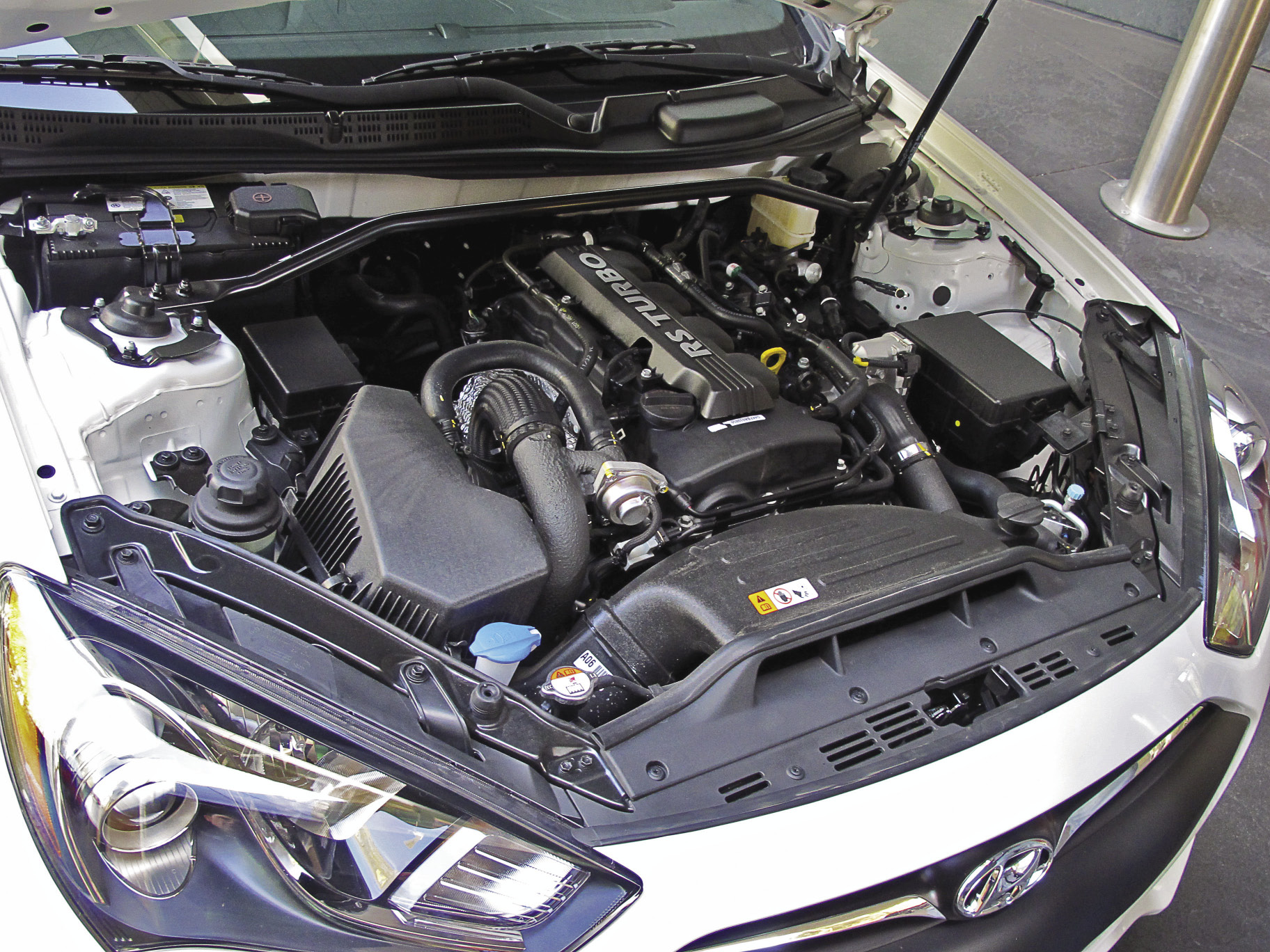 Tit for Tat
Tit for Tat
Neither Scion nor Subaru could figure out the cup holder situation though. In both cockpits, the removable centre console tray has provisions for two bevy cups and makes cleaning up spills relatively easy. However, it's tricky to reach unless you are a contortionist or have arms and claws like a T-Rex. Might I suggest a better place for your hot morning coffee can be found in the lower door panel where left-handed drivers might not find it so awkward (as this right-handed one can attest).
The 196-litre trunk is bit small and there's no exterior trunk popper button in the handle or anything like that. Another funny thing is the horn sounds like it's coming from the passenger side door whenever it's honked. The Subaru horn sounds cornier for some reason, but I find its exhaust note more natural-sounding compared to the FR-S, which sounds a bit forced. The heart of each car is, of course, the Subaru Boxer engine.
The FR-S and BRZ manual is smooth and isn't notchy when moving in and out of the gates whatsoever. It's perhaps a touch tall, but nothing a short shifter kit can't fix. The Subaru clutch has a really nice feel to it – not too hard or soft with medium push-back that translates to a nice performance feel. The same pedal feels a lot lighter and the engagement point much higher in the Scion, perhaps because the test mule has almost 10,000 more kilometres on its engine than the BRZ does. It shows with a rough idle.
The sixth gear is like a big bonus unlike so many long lost five-speed Subaru manual transmissions. Subaru Canada and Toyota Canada both gave me one week with their version of the new 86 coupe last fall. They both returned pretty reasonable fuel economy numbers – the FR-S averaging 7.6 L/100 km over 788 km while the BRZ saw 7.8 over 695 km of combined local and highway driving
Both cars have been successful in bringing affordability back to the performance car category in spades. They offer excellent value at the low end of the sporty RWD coupe price scale straight out of the box. Fun? Yes. But far from perfect.
 Let's Get it On!
Let's Get it On!
A few weeks later I drove them both again during the Automobile Journalist's Association of Canada's (AJAC) annual “TestFest” event back-to-back-to-back on the street and the track versus the 2013 Hyundai Genesis Coupe 2.0T R-Spec and seven more current competitors (all FWD or AWD) in AJAC's “Sports/Performance Car (under $50,000)” category.
The other entries being the Chevrolet Sonic RS, Fiat 500 Abarth, Ford Focus ST, Honda Accord Coupe, Hyundai Veloster Turbo, Mini Roadster and Volkswagen Golf R. Only the highest-rated vehicle can be considered for the overall CCOTY, which will be announced at the 2013 Canadian International Auto Show in Toronto.
Whether to choose the BRZ over the FR-S may boil simply down to whether you fancy yourself more of a Subaru person or a Toyota person. But, whoa there sirs! These aren't the only ponies in the affordable RWD coupe game. Lest we forget the Hyundai Genesis Coupe? Let's not.
 |
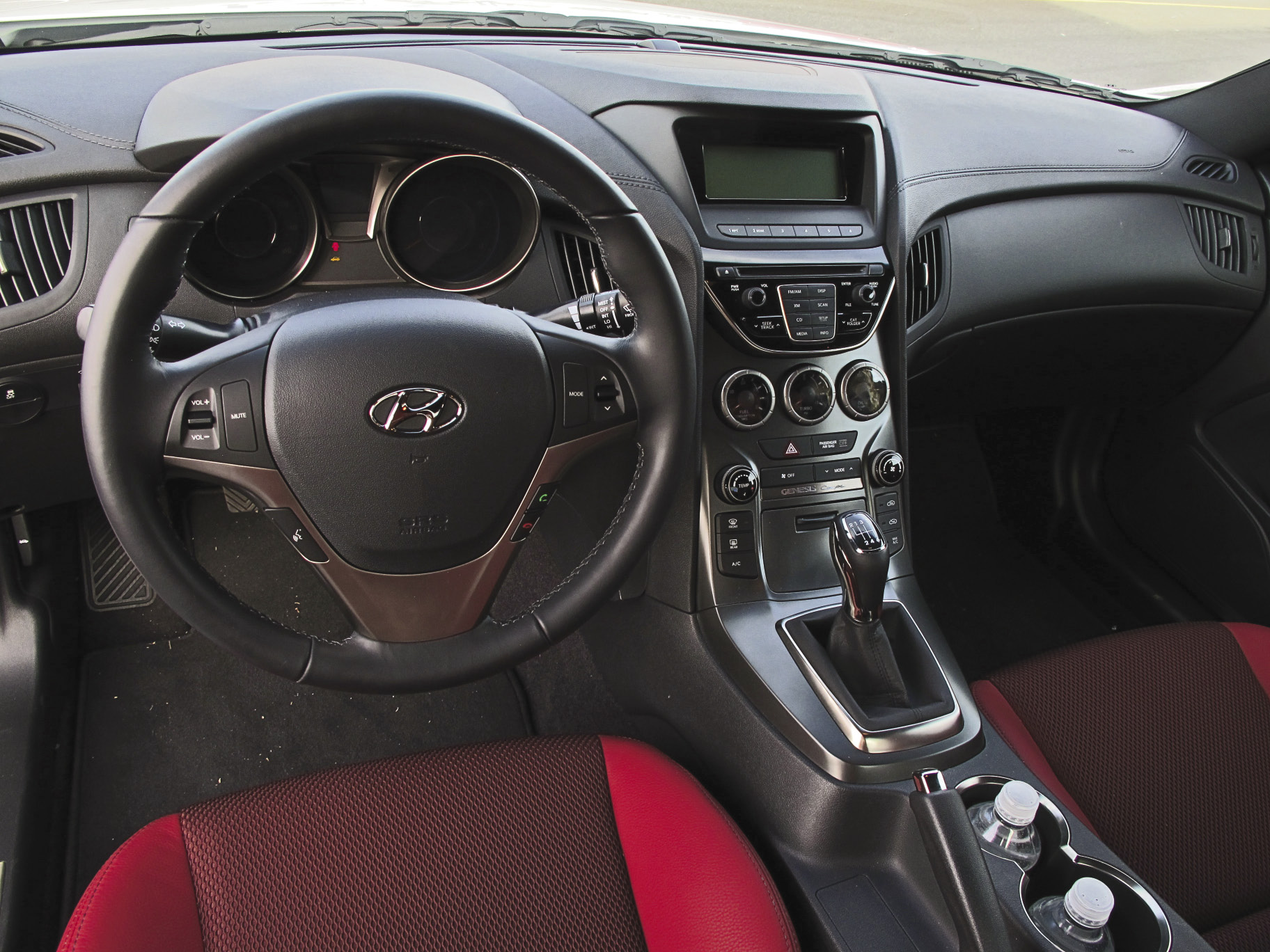 |
The (Next?) Contender
I drove the 2.0T R-Spec last spring at Hyundai's 2013 media launch, both on public high-desert roads and on the at the Spring Mountain Motorsport Ranch road course in Pahrump, Nevada. A few months later, they let me tear around the Mosport DDT in one at the last Hyundai Fun Day.
The Korean-built coupe doesn't just fall to the wayside. With a 250 mm longer wheelbase, 80 mm wider track in the front and rear plus host of other features, the Genesis Coupe doesn't just feel like more car, it is more car. It can be had with either a 348-hp 3.8L V6 or the turbocharged four-cylinder in the 2.0T model, which enjoys 274 hp and 275 lb-ft of torque whether or not you go for the basic trim that starts at $26,499.
As tested, the 2.0T R-Spec sells for $28,799 all in. Spring for it and Hyundai adds a Torsen limited-slip differential, R-spec calibrated suspension, upgrades the wheels from 18 to 19 inches and also pimps out the four-wheel ABS brakes with 340 mm front and 330 mm rear ventilated discs and four-piston calipers from Brembo to make the price of admission even more attractive.
Compared to the competition, the Gen Coupe feels more substantial all around – solid if you will – with a larger, quieter cockpit featuring better-placed cup holders and nicer fit-and-finish to start. Seating is not as firm nor supportive, but sufficient and worthy of being called sporty nonetheless. The pedals are placed well for easy heel-and-toeing while the six-speed manual transmission is geared well for cruising and spirited track driving; though it does fight back occasionally when downshifting into second.
The hydraulic steering system provides excellent feedback and linear response – both important for enthusiast drivers – however, is prone to overheating during steering-intensive exercises such as running a tight slalom and/or autocross course. And, like it or not (many people do), the Hyundai has a multifunction steering wheel to control other things in the car besides its direction.
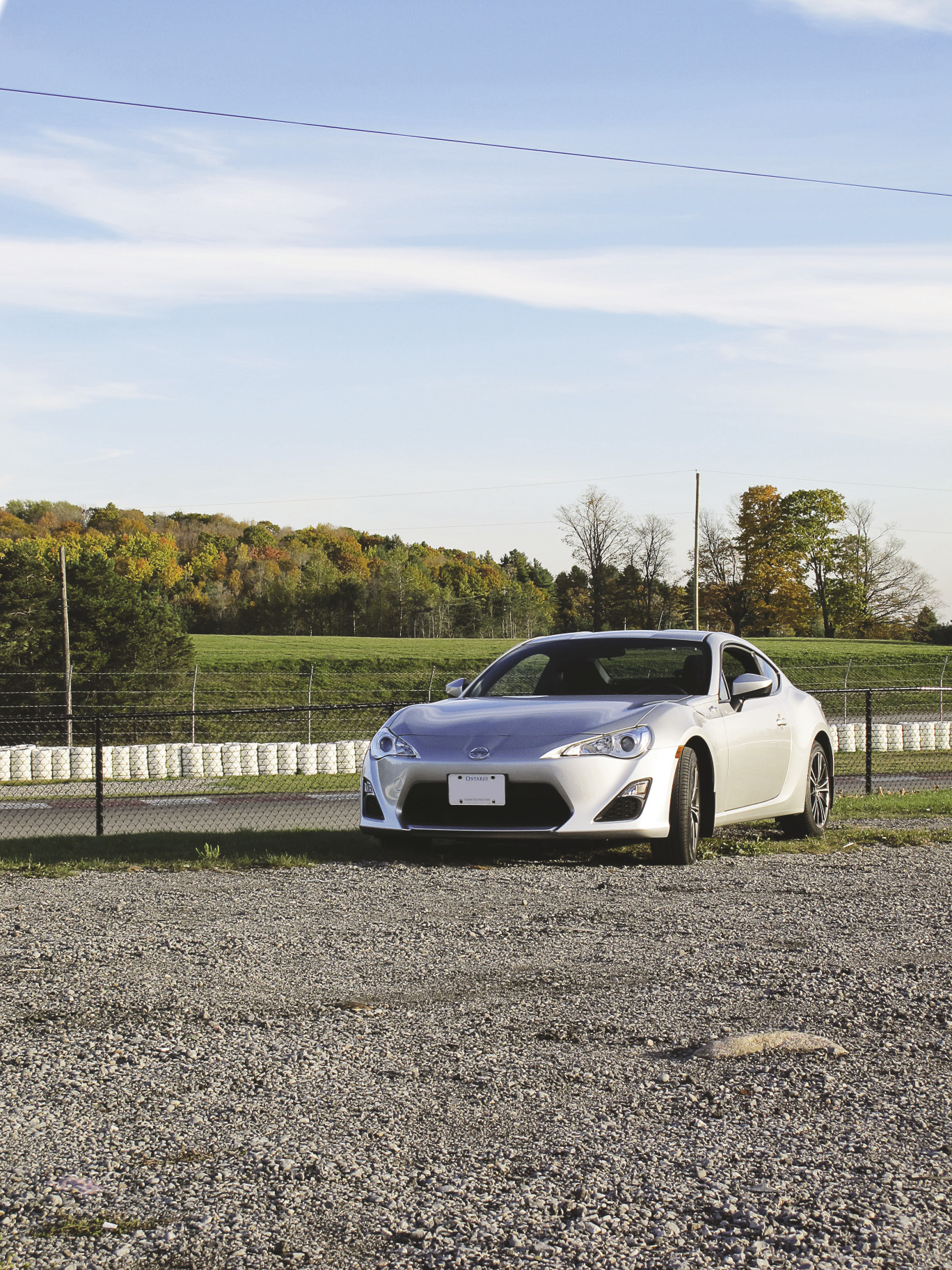 To Your Corners!
To Your Corners!
Like the BRZ and FR-S, the Genesis has a three-stage traction and stability control system that can be defeated to squeeze as much dynamic performance out of the superbly well-balanced chassis as possible when desired. Despite giving up a couple hundred kilograms in curb weight and, in spite of the extra horsepower and torque of the present company, the 2.0T feels better planted, more predictable and easy-to-drive when it is being driven hard out on a road course. Naturally, the high-performance Bridgestone summer tires (standard on the R-Spec) are part and parcel to this.
All three cars also have the latest in-car infotainment goodies like double-DIN head units with Bluetooth phone and audio streaming, iPod, USB, aux and 12-volt connections. They each have a non-split folding rear seat – Scion advertises a second set of wheels and tires will fit back here for weekend track excursions – but the Genesis boasts 332 litres more cargo and trunk capacity in addition to 350 litres more interior passenger space. Passengers might not enjoy the perceived extra rear legroom, however, upon discovering the aggressive rear glass angle can make for a bumpy ride if you catch my drift.
Speaking of which, each can be drifted quite easily. Although, the Hyundai has the most responsive and best-balanced chassis of the lot, which makes finding and modulating the perfect yaw moment via the throttle that much easier. The limited-slip feels the most neutral and the clutch has the most grown-up feel to it.
“The Genesis is a car for grown-ups,” said one colleague when comparing this affordable threesome during the AJAC TestFest event.
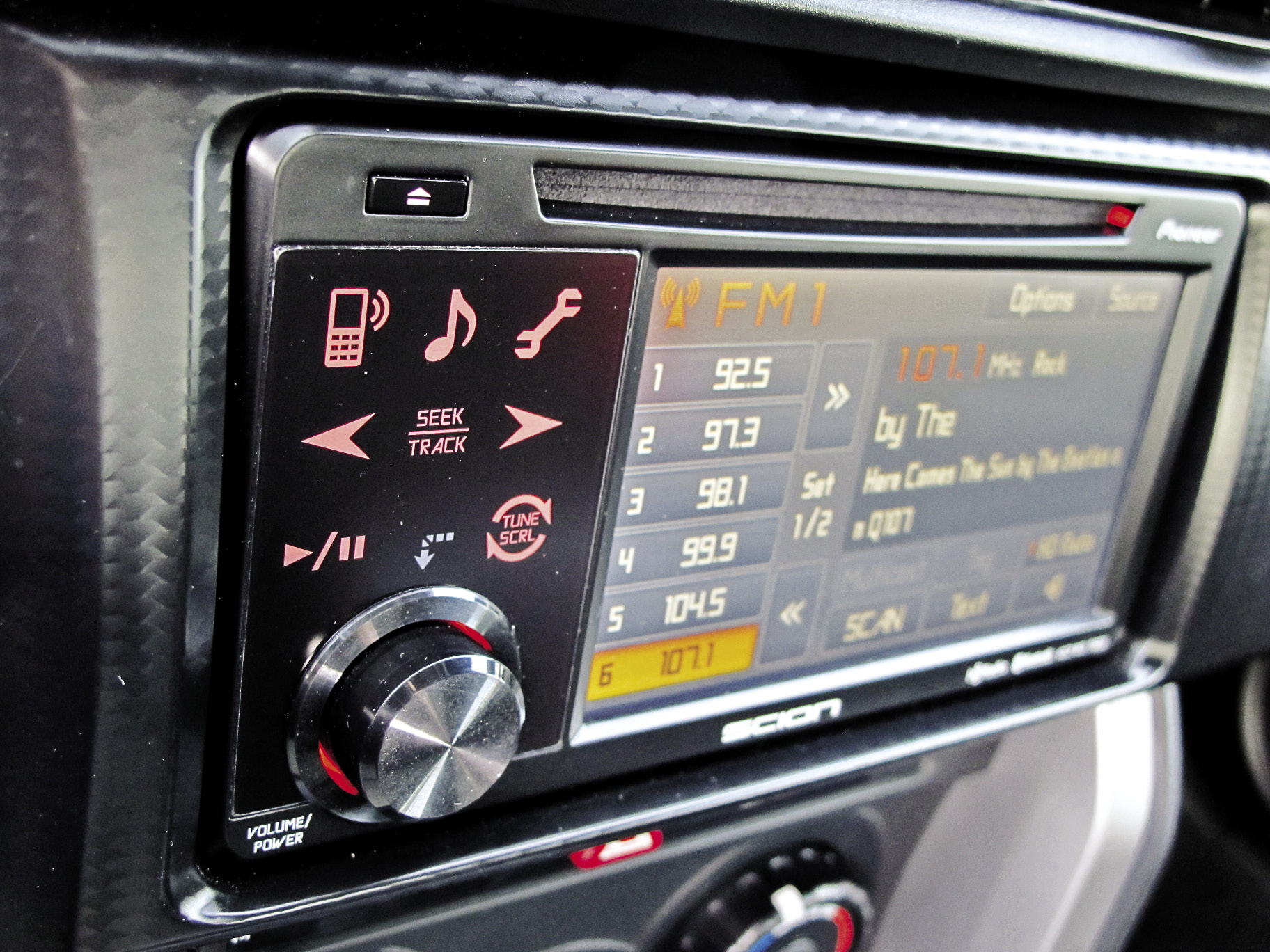 Going the Distance
Going the Distance
The BRZ and FR-S behave similarly to one another out on the Niagara District Airport runway's handling course. The spring rates on the BRZ are not as aggressive in the rear, giving it a more comfortable and compliant ride on a day-to-day basis. Both are fun to drive on the track too – with the traction control systems switched off of course.
The Subaru is more stable through fast sweeping corners while the more-aggressive Scion suspension is a bit more tail-happy. This is most evident in the short slalom section of our modest test course while both are fairly limited by the Michelin Primacy HP tires – shared with the Prius by the way – anywhere but public roads. While the grip levels aren't exactly prodigious, the Boxer engine's power and torque aren't exactly shredding them to pieces either. Both have a tough time keeping up with the more powerful Genesis.
On-site performance testing done by fellow AJAC members reveals the huge difference the Brembos make. In fact, the R-Spec needs 37.9 metres of runway to make a complete emergency stop from 100 km/h compared to the FR-S and BRZ with total stopping distances of 40 and 40.8 metres, respectively. In the forward direction, the Genesis hauls from zero-to-100 km/h in 6.9 seconds while the Toyobarus tied at 7.3 seconds; and, from 80-to-100, it does 4.3 seconds versus 5.5 and 5.6 by the Japanese vehicles.
For the everyday driver that is looking for an occasional track car – two or three times a season perhaps – that doesn't break the bank and isn't the least bit pretentious, the Genesis Coupe 2.0T is tough to beat. It offers above average performance at a reasonable price and makes for a mighty fine race car too as the 2012 CTCC champion and our very own resident hot-shoe Sasha Anis can attest.
The Decision
Whereas the Scion FR-S and Subaru BRZ twins are excellent cars that have arrived to market at the right time with the right mix of features and a very fair asking price to appease niche markets and brand loyalists, they simply don't have as much mass appeal as the Genesis Coupe does, which is something I never thought I would say.
It ticks all the boxes, pushes all my buttons, got fresh with me out on the test track and finishes atop this particular comparison without much ado, but it didn't win its category at TestFest and neither did the other two.
At least a few of my other predictions came true this year. First, the BRZ/FR-S vote was split down the middle. Second, the Ford Focus ST reigned supreme in this price range. As it stands, AJAC's top five 2013 sports performance cars under 50 grand are: 1 – Ford Focus ST (693 points), 2 – Scion FR-S (692), 3 – Hyundai Genesis Coupe 2.0T R-Spec (690), 4 – Subaru BRZ (689), 5 – VW Golf R (684). The latter is the most expensive with a MSRP of $39,675. The Focus ST cost $32,623 as tested.
The only thing that could have made this sport compact performance battle even closer and more epic would have been the surprise, last-minute addition of the next successor to the even more popular Nissan 180/240/Silvia platform. Rumour has it one might be coming down the pipeline. Let's all pray it doesn't emerge with either a CVT or FWD.
 Specifications
Specifications
2013 Hyundai Genesis Coupe 2.0T
Base Price: $26,499
Engine: Turbocharged 2.0L 4-cyl.
Horsepower / Torque: 274 hp / 275 lb-ft
Configuration: FR
Transmission: 6-speed manual
Fuel Economy Ratings (L/100 km): 10 / 6.6 / 8.5 (city / hwy / combined)
Options on Test Vehicle: R-Spec package ($2,300) – 19” gunmetal alloy wheels, Brembo braking package, performance-tuned dampers, thicker front/rear sway bars, Torsen limited-slip differential, cloth/leather seats
A/C Tax: $100
Freight: $1,565
Price as Tested (before taxes): $28,799
Basic Warranty: 60 months / 100,000 km
2013 Scion FR-S
Base Price: $25,990
Engine: Horizontally-opposed 2.0L 4-cyl. DOHC Subaru Boxer
Horsepower / Torque: 200 hp / 151 lb-ft
Configuration: FR
Transmission: 6-speed manual
Fuel Economy Ratings (L/100 km): 9.6 / 6.6 / 8.3 (city / highway / combined)
Options on Test Vehicle: N/A
A/C Tax: $100
Freight: $1,495
Price as Tested (before taxes): $25,990
Basic Warranty: 36 months / 60,000 km
2013 Subaru BRZ
Base Price: $27,295
Engine: Horizontally-opposed 4-cyl. 2.0L DOHC Subaru Boxer
Horsepower / Torque: 200 hp / 151 lb-ft
Configuration: FR
Transmission: 6-speed manual
Fuel Economy (L/100 km): 9.6 / 6.6 / 8.3 (city / hwy / combined)
Options on Test Vehicle: N/A
A/C Tax: $100
Freight: $1,595
Price as Tested (before taxes): $27,295
Basic Warranty: 36 months / 60,000 km






















